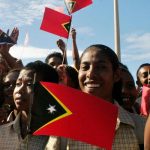
National Day of Prayer
National Day of Prayer is an annual observance day that is observed on the first Thursday in May. On this day, Americans are encouraged to give thanks and to turn to God in prayer and peaceful meditation. Although it’s an observance that goes back to before the founding of the U.S., the modern incarnation of this holiday was created with the passage of the National Day of Prayer Act (36 U.S.C. § 119), which designates the president to proclaim the first Thursday in May as a national day of prayer in which people can turn to God and pray at church, in groups, or as individuals.
This holiday is not without its share of controversy, however. One of the biggest controversies about this holiday was that its constitutionality was unsuccessfully challenged in court by the Freedom From Religion Foundation. This case was dismissed in April 2011 by a federal appellate court.
The History Of The National Day Of Prayer
This holiday can be traced back to 1775 when the Continental Congress allocated a day for prayer during their formation of the new nation. They issued a proclamation that recommended that all of the English colonies observe a day of public humility, prayer, and fasting on July 20, 1775—a day that fell on a Thursday.
The body of this proclamation was written by John Hancock and John Witherspoon and instructed the colonists to pray for the resumption of the just privileges and rights of the Colonies in both religious and civil matters. The colonists participated in the activities of this day so much that the Continental Congress decided to make a call for prayer and fasting to be held each spring, as well as a day of thanksgiving to be held every autumn.
On May 6, 1779, General George Washington acknowledged a day of prayer, humiliation, and fasting. The general allowed his troops to observe the day by ceasing all unnecessary labor on that day. The following year, Congress once again announced a day of prayer, fasting, and humiliation to be held on April 26, 1780—a day that fell on a Wednesday that year. Over the next few years, a national day of prayer and/or fasting was not observed and would not be observed until 1789.
U.S. President George Washington asked for a national day of prayer and thanksgiving to be observed on November 26, 1789. This holiday was designed to be an extension of the Thanksgiving tradition, which had already taken hold in New England. U.S. President Adams would later issue proclamations asking for a national day of prayer to be observed in both spring and again in fall.
However, President Thomas Jefferson did not like this practice and, as a result, didn’t issue proclamations for the day. That’s because he strongly believed that prayer should be a personal matter for citizens and that there shouldn’t be any involvement in it from the state. On March 3, 1863, U.S. President Abraham Lincoln would sign a Congressional resolution that established a day of prayer and fasting to be observed on April 30, 1863.
Ever since the 18th century, various U.S. Presidents have asked for citizens to pray in cases of national emergency or when there is a tragedy. It wasn’t until April 17, 1952, however, that an actual National Day of Prayer was passed by the U.S. Congress and signed into law by then U.S. President Harry Truman. According to this law, each U.S. President was required to proclaim a national day of prayer each year, according to the president’s choice.
In 1972, the National Prayer Committee was formed in the U.S. This committee would go on to create the National Day of Prayer Task Force, a task force with the intended purpose of coordinating events for this observance day. In 1988, President Reagan signed an amendment to the law that designated the first Thursday of May as the National Day of Prayer.
Both the Ronald Reagan and George H.W. Bush administrations hosted National Day of Prayer events at the White House. Although U.S. President Bill Clinton did proclaim the holiday annually, he didn’t hold any special events at the White House during his administration. U.S. President Barack Obama also didn’t hold any public events pertaining to this holiday during his administration, but he did issue the proclamations. During the COVID-19 pandemic, virtual prayer events were planned, and U.S. President Donald Trump issued an official proclamation.
Nowadays, the National Day of Prayer is a day that’s observed by not only Christians of many different denominations but also by Jews, Hindus, Muslims, and Sikhs. It’s a day on which people can observe whatever religion they practice and celebrate the fact that they can observe it in the United States without the government interfering in their observance.
National Day of Prayer Customs, Observances & Traditions
This is a holiday that’s proclaimed by a U.S. President every single year and is observed on the first Thursday in May. It’s a bookend to the holiday of Thanksgiving—a day that is observed on the fourth Thursday in November. The two holidays are very similar, but the National Day of Prayer is viewed as more of a religious holiday, and Thanksgiving is viewed as more of a secular holiday.
Each year, almost 40,000 prayer gatherings are held all over the United States. This means that millions of people across the country take advantage of the day to pray. On this day, many people will attend religious events such as choirs, concerts, and even prayer luncheons.
Religious people can observe this holiday with prayer services, luncheons, and other social gatherings, and people who aren’t religious can use this day as a day of reflection. People can also use the hashtag #NationalDayOfPrayer to spread the word about this holiday online. Regardless of how a person chooses to celebrate it, however, it’s a day that just about everyone can make meaningful through self-reflection.








